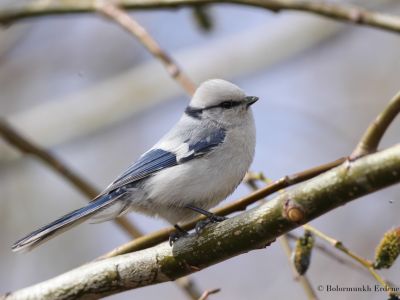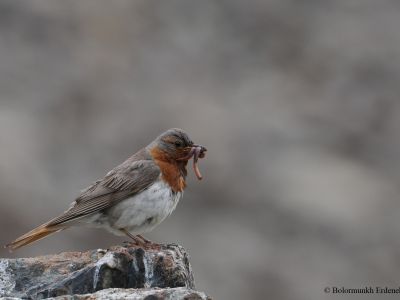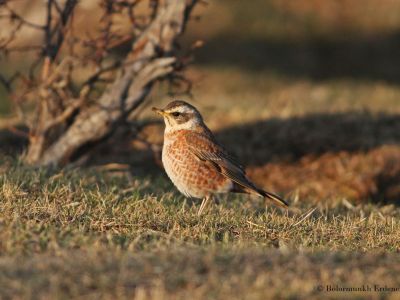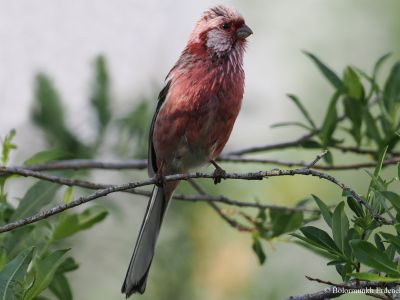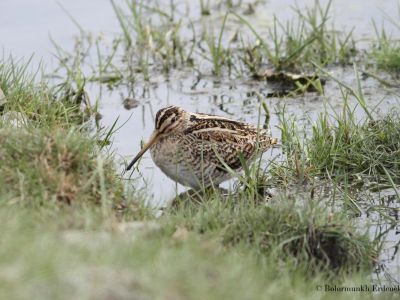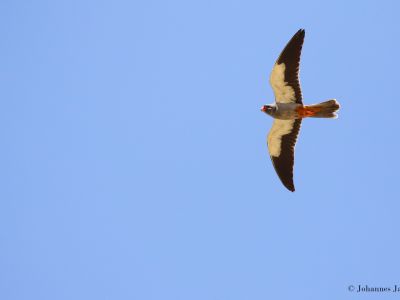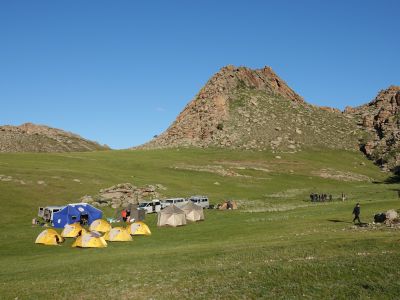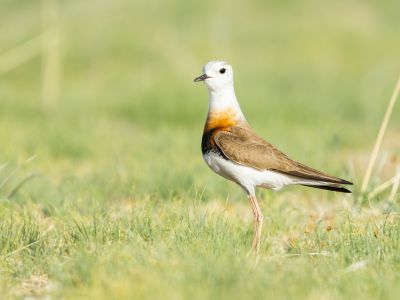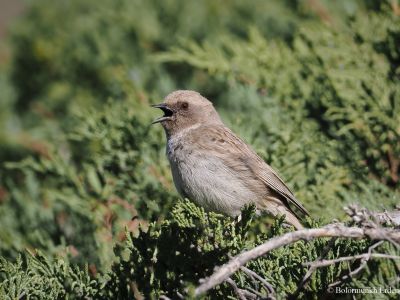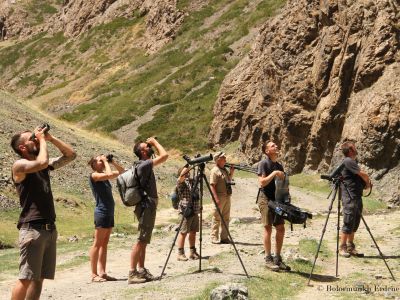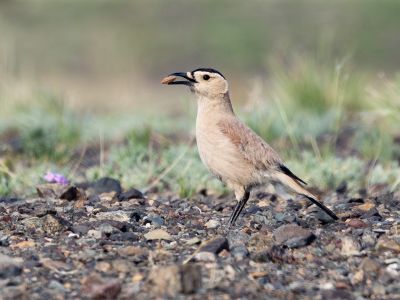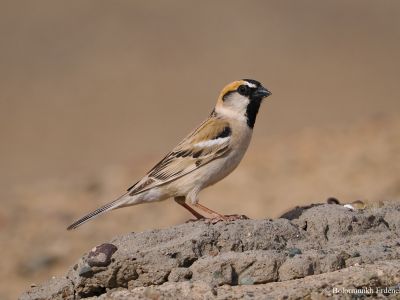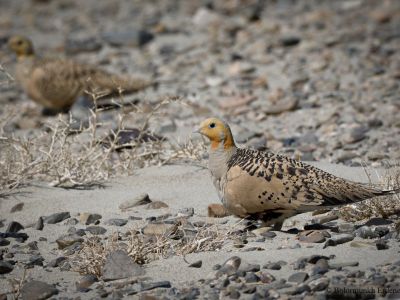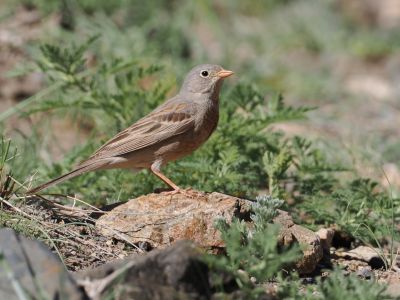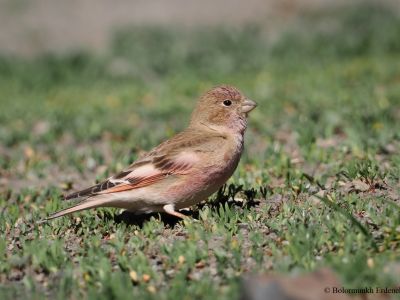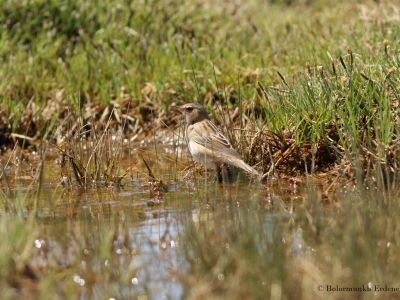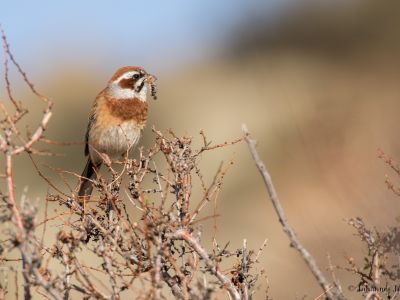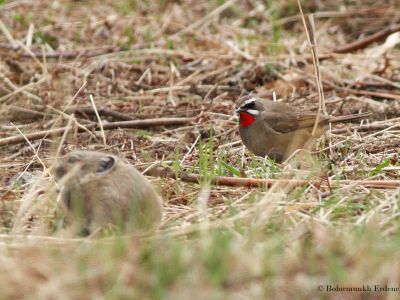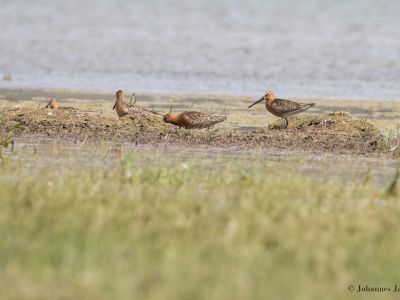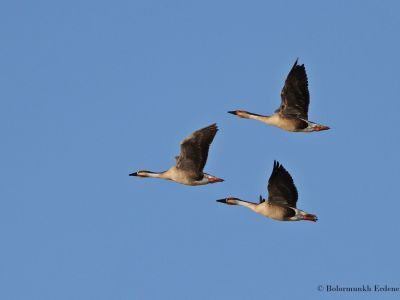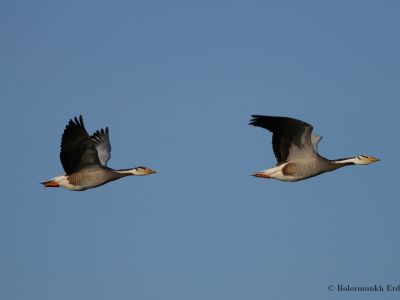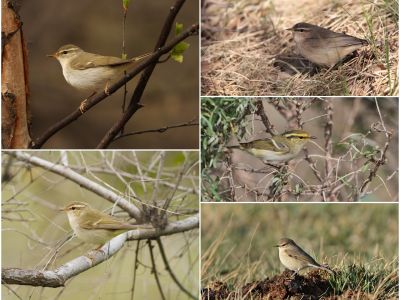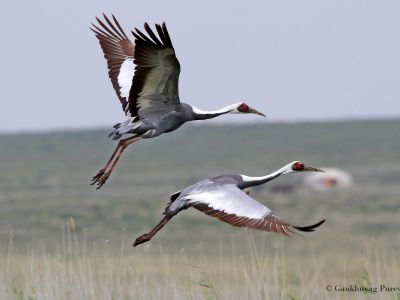Classic birding tour of Mongolia: Gobi and Steppe lakes
Siberian taiga forest, the famous Gobi, the southeastern end of the Altai mountain range and shallow and saline steppe lakes.Summary
This is one of the most well know and sought-after birding routes in Mongolia for birders. It is a well explored destination for both western tourists and locals. This itinerary provides an opportunity to visit the southern edge of the Siberian taiga forest, the iconic Gobi Desert, the southeastern end of the Altai mountains and several shallow saline steppe lakes.
The tour provides excellent opportunities to observe a wide range of bird species native to the Central Asian high mountains, Gobi Desert, and steppe grasslands. In addition, it is timed to coincide with the peak spring and autumn migration, when Siberian-bound birds return from their wintering grounds in Africa, South Asia, and Southeast Asia to breed in the Siberian taiga and Arctic tundra. Each destination is carefully selected based on more than 10 years of field experience and regular site visits.
For days at a time, we travel through vast, uninhabited, and breathtaking landscapes. Our only human encounters are usually with nomadic herders and their sheep, goats, horses, and yaks. Mongolia is the least densely populated country in the world, with most people living in the capital, which allows for an exceptional sense of wilderness. During this nature and birding expedition, you will experience landscapes that are increasingly rare elsewhere in the world, as well as an extraordinary diversity of mammals, birds, and many other natural wonders.
Our tours are longer than most other tours. This allows us to cover the full peak migration period, when different groups of Siberian-bound migrants pass through Mongolia. Early migrants such as thrushes and buntings typically arrive in early May and reach their breeding grounds by mid-May, while later migrants—such as leaf and grasshopper warblers—begin to appear from late May onward.
Several European birdwatching companies have followed this itinerary for years and often record around 200 species on a single tour.
As a result of improvements due to our local knowledge and the addition of a few more bird rich destinations, our recent tours recorded an unprecedented 300 species - making our tour by far the most successful and species-rich birding experience available in Mongolia.
Key target species
- Taiga forest: Black-billed Capercaillie, Azure-winged Magpie, White-backed Woodpecker, Three-toed Woodpecker, Siberian Thrushes – (Naumann’s, Dusky, Eye-browed, Black-throated, Red-throated and White’s), Azure tit, Siberian Rubythroat, Eversmann’s Redstart, Chinese bush Warbler, Two-barred Warbler, Pallas’s leaf Warbler, Dusky Warbler, Arctic Warbler, Hume’s leaf Warbler, Long-tailed Rosefinch, Meadow Bunting, Black-faced Bunting, Yellow-breasted Bunting
- Steppe: Saker falcon, Upland Buzzard, Steppe eagle, Cinereous Vulture, Mongolian lark, Asian short-toed lark, Père David's Snowfinch, Pallas’s reed Bunting (subspecies lydiae)
- High mountain: Altai Snowcock, Hodgson’s Bushchat, Asian rosy Finch, Altai Accentor, Brown Accentor, Güldenstädt's redstart, Stejneger’s stonechat
- Gobi: Oriental Plover, Pallas’s Sandgrouse, Mongolian Groundjay, Saxaul Sparrow, Steppe grey Shrike, Isabelline Shrike, Mongolian Accentor, Asian desert Warbler, Sulphur-bellied Warbler, Mongolian Finch, Grey-necked Bunting, Godlewski’s Bunting
- Wetland and lakes: Swan Goose, Bar-headed Goose, Stejneger’s Scoter, Pallas’s Fish Eagle, Eastern marsh Harrier, Relict Gull, Pallas’s Gull, White-naped Crane, Siberian Crane, Hooded Crane, Demoiselle Crane, White-winged Tern, Swinhoe’s Snipe, Pin-tailed Snipe, Long-toed Stint, Red-necked Stint, Pallas’s Grasshopper Warbler
- The best period for this trip: 20 May - 06 June
- Duration: 16 days
- Group size: 5 - 9 participants
- Availability: Available
ITINERARY
Day 1. Ulaanbaatar: Arrival at Ulaanbaatar, the capital city of Mongolia. Birding along the riparian forest of the Tuul river and a few small lakes to find early spring migrants.
Day 2. Khentii mountain, taiga forest: We explore a variety of habitats ranging from riparian poplar forest to larch, pine and birch covered hill side and mountain top and narrow valleys and meadows bisected by wild and rugged rivers.
The main target is to see lekking Black-billed Capercaillie in their prime habitat.
Day 3. Drive to Gobi desert
Day 4 – 5. Zuun saikhan mountain. Yolyn am gorge and Gobi plateau: Many resident and summer breeding birds such as Altai snowcock, Himalayan griffon, Bearded vulture, Golden eagle, Mongolian accentor, Wallcreeper, White-winged snowfinch, Beautiful rosefinches and buntings are to be seen. The gorge also acts as a migrant stopover and the stream flowing through the bottom of the canyon could hold thrushes, warblers and buntings. On the plateau, we observe beautiful Oriental plovers displaying.
Day 6. Khongoryn els sand dune: Long drive through stunning desert scenery. On the way, we check several tree plantations for more migrants and search for the Mongolian Ground jay. In the evening, birding at Saxaul forest and wetland along the foothill of the sand dunes.
The landscapes here are absolutely magnificent. They offer a variety of desolate dry plains with the mountains of Altai in the background. At the sand dunes we look for some of the most iconic species of the Gobi: the Saxaul sparrow and Mongolian ground jay.
Day 7 - 10. Gobi lakes and Gobi Altai mountain: Driving through Saxaul forest, extensive dry desert and crossing the Gobi Altai mountain. The following birds are seen on the way. Long-legged buzzard, Pallas’s sand grouse, Saxaul sparrow, Steppe grey shrike, Asian desert warbler, Hill pigeon, Lesser kestrel etc.
We will visit Kholboolj and Buuntsagaan lakes to find migrating waders and Relict gull, Pallas's gull, Pallas's fish eagle etc.
Day 11. Drive to Khukh lake. Raptors such as Upland buzzard, Steppe eagle and Saker falcon are seen.
Day 12 - 13. Khukh lake is a beautiful high mountain fresh water lake located at 2600m above sea level. Key targets are Altai snowcock, Hodgson’s bushchat, Asian rosy finch, Altai accentor, Brown accentor, Eversmann’s redstart and Güldenstädt's redstart.
Day 14 – 16. Steppe lakes, Ogii and Bayan lake: Siberian Scoter, Black-throated loon, thousands of White-winged terns, Demoiselle crane and Falcated duck, Eastern marsh harrier, Oriental reed warbler, Paddyfield warbler, Pallas’s reed bunting and Bearded reedling.
Day 17 – 21. 5 days of tour extension to North Eastern Mongolia. Visiting a Ramsar and North east Asian crane network site. Target species includes White-naped, Siberian and Hooded cranes, Falcated duck, Chinese spot-billed duck, Great bustard, Amur falcon, Japanese quail, Brown-cheeked rail, Grey nightjar, White-throated needletail, Yellow-breasted bunting, Chestnut-eared bunting, Meadow bunting, Chinese bush warbler, Lanceolated warbler, Thick-billed warbler and Pallas’s grasshopper warbler.
Accommodation: Lodging is a combination of hotels, tourist resorts and camping out in tents depending on what is available at each location.
Transport: Transport options are usually 4WD Toyota Land Cruiser jeep or Russian UAZ 2206 minivan depending on the client’s choice.
Walking: The hiking during the tour is mostly easy to moderate because we will be driving directly to the destinations. However, once we are at the birding location there will be one or two optional harder walks in the mountains for those who choose.
Climate: Predominantly dry and sunny, but some overcast weather and rain (or rarely even snow) is likely and wind is a regular feature of the desert. Temperatures generally range from warm to cool, but it can be cold at night at higher altitudes and sometimes it gets hot in the Gobi.
TOUR REPORTS
| Group and dates | Read the reports |
|---|---|
| Ornis Birding Expeditions. 8 participants. 25 May - 14 June 2025 | TOUR REPORT |
| Ornis Birding Expeditions. 8 participants. 21 May - 05 June 2023 | TOUR REPORT |
| Dutch group. 8 participants. 14 May - 04 June 2023 | TOUR REPORT |
| STARLING Reizen. 8 participants. 18 May - 8 June 2019. | TOUR REPORT |
TOUR DATES
| 2026 | |||||
|---|---|---|---|---|---|
| Tour dates | Duration | Availability | |||
| 25 May - 14 June 2026 | 21 days | FULLY BOOKED | |||
| 22 May - 06 June 2026 (dates are flexible) | 16 days | 4 SPACES | BOOK TOUR | SHOW DETAILS | |
| 2027 | |||||
|---|---|---|---|---|---|
| Tour dates | Duration | Availability | |||
| 21 May - 05 June 2027 (dates are flexible) | 16 days | SPACES | BOOK TOUR | SHOW DETAILS | |




